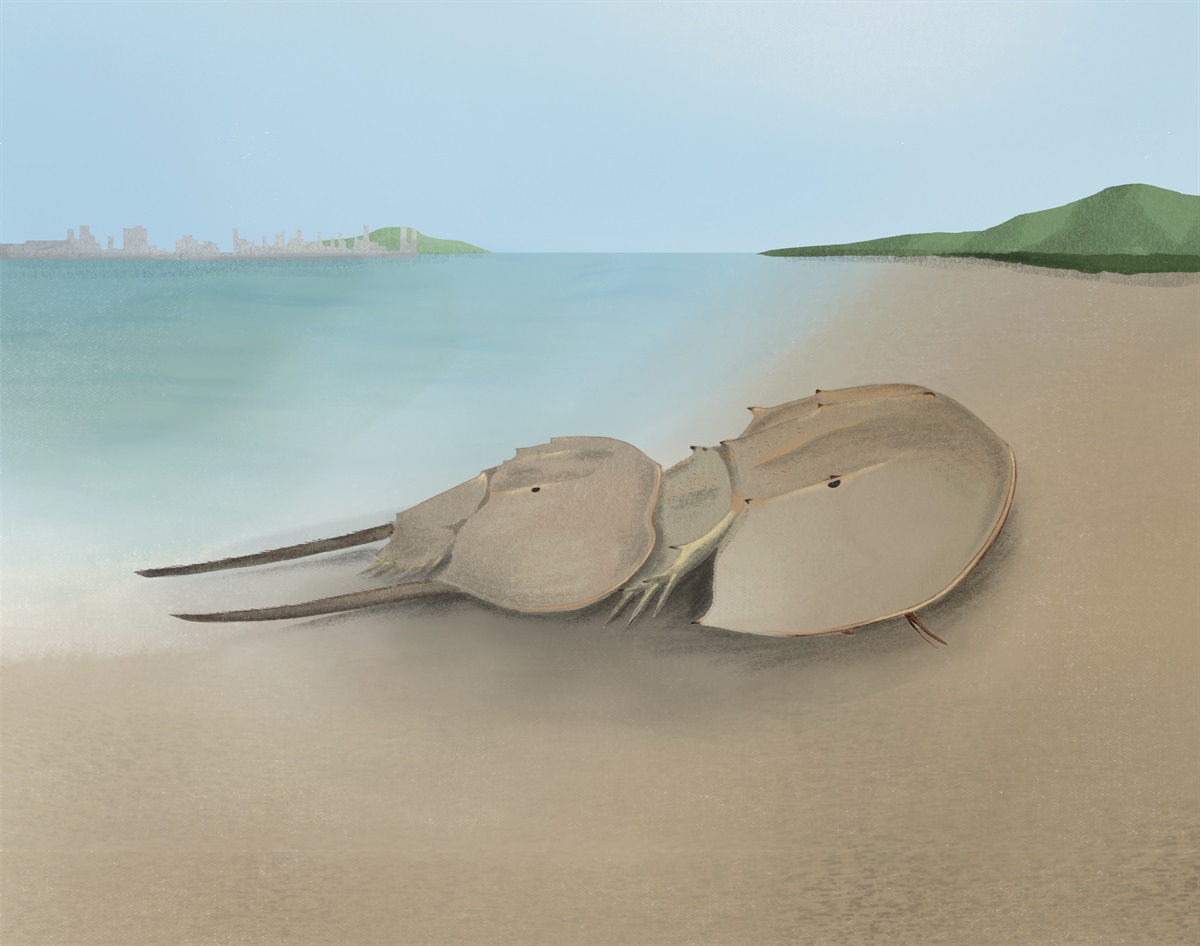Horseshoe crabs have evolved and lived on the earth for 450 million years, preserving their peculiar appearance until now, thus being called 'living fossils'. There are four species of horseshoe crabs in the world, including two in Hong Kong, one of them is the Chinese Horseshoe Crab.

There are three body parts of Chinese Horseshoe Crab, including the prosoma that looks like a horseshoe, the hexagonal opisthosoma, as well as the long triangular telson. Individuals of Chinese Horseshoe Crab live on the seabed for most of their lives, but they return to intertidal mudflats for reproduction. During the process, males clamp tightly onto females with their walking legs. The females will then dig holes on the mudflats to lay their eggs for fertilisation by the males.
Newly-hatched Chinese Horseshoe Crabs are tiny, talking about the size smaller than the nails on our pinky fingers. Juveniles live on mudflats. They bury themselves in mud to hide from predators during high tides, and emerge to forage during low tides. After molting for about 17 times, they reach sexual maturity, and embark on a new journey to live in the sea.
Although horseshoe crabs have survived the long process of natural selection, recently they have been facing the threat of extinction. The threats include loss of spawning and nursery grounds due to coastal development, reduction of reproduction and survival rates due to pollution, and over-harvesting for the production of a medical reagent namely Tachypleus Amebocyte Lysate. Currently, the two species found in Hong Kong waters (i.e. Chinese Horseshoe Crab and Mangrove Horseshoe Crab) are both listed as 'Grade II National Key Protected Species' in the Mainland.
| Family | Limulidae |
|---|---|
| Scientific Name | Tachypleus tridentatus |
| Adult Size | More than 20 cm in prosoma width |
| Habitat | Intertidal and benthic |
| IUCN Red List Status | Endangered |
